History of Tula
Foundation of Tula
Tula is one of the oldest cities in Russia. In the distant past, the Slavic tribe of Vyatichi lived on the territory of the Tula region. At the end of the 10th century, the Vyatichi became tributaries of the Kiev princes. In 1054, their lands became part of the Chernigov Principality. Tula was first mentioned in the Nikon Chronicle of the 12th century under 1146.
During the first centuries of its existence, Tula was no different from other settlements of this region. It was a small, palisaded village located on an islet at the confluence of the Upa and Tulitsa rivers. The name “Tula”, apparently, is closely related to the Tulitsa River and is most likely interpreted as “a hidden, inaccessible place”.
In the 13th century, the northeastern part of the Chernigov Principality, which included Tula, was captured by the Ryazan princes. During the Mongol invasion, the Tula region was in the way of the Mongols’ advance towards Moscow. In 1380, in the southeastern part of today’s Tula region, between the Don and Nepryadva rivers, the famous Battle of Kulikovo took place (the key point in Russian history at which Mongol influence began to decrease).
More Historical Facts…
Tula in the 16th-17th centuries
From the 16th century, Tula began to be of great strategic importance, as it was located on the southern outskirts of the Russian state, on its steppe border and near several roads along which the Crimean Tatars moved. In 1514-1521, a stone fortress (kremlin) was built on the left bank of the Upa River, which became the core of the developing town. In 1552, Tula withstood the siege of the troops of the Crimean Khan Devlet I Girey, who tried to stop the campaign of the troops of Tsar Ivan the Terrible against Kazan. During the 16th century, Tula suffered greatly from the constant raids of the Crimean Tatars.
At the beginning of the 17th century, Tula found itself in the thick of events known in the history of Russia as the Time of Troubles. In 1605, False Dmitry I, who captured Tula, waited for the fall of Moscow here. In 1607, Tula was engulfed in a peasant uprising led by Ivan Bolotnikov, which the government troops managed to suppress only after a four-month siege of the town.
By the middle of the 17th century, with the annexation of the left-bank Ukraine, Tula lost its position as a defensive center, since the border of Russia moved far to the south. But its location at the intersection of important roads contributed to the fact that Tula became a trade town. The development of the town’s traditional blacksmith craft was supported by the Moscow sovereigns, who needed their own iron and gun industries.
The first arms factory in Tula was built by Andrew Vinius, permission for the construction of which he received from Tsar Mikhail Fedorovich in 1632. Later, his companions, Peter Marselius and Filimon Akema, built new factories near Tula that produced not only military, but also household metal products. From the end of the 17th century, the iron-making production of Tula passed into the hands of the famous Russian industrialist Nikita Demidov.
Tula in the 18th-19th centuries
The 18th century became a new era in the development of Tula. By order of Peter I, the first state-owned arms factory was built in Tula - the basis for the entire arms industry in Russia. Tula became known as a large industrial center of iron production. The town became famous for the art of its masters, who manufactured not only weapons, but also precise measuring and physical instruments, various mechanisms, and artistic metal products.
In 1778, the coat of arms of Tula was approved with the following description: “In a scarlet field, horizontally laid on two silver sword blades, lying like the St. Andrew’s cross, with the ends down, a silver rifle barrel; above and below, one gold hammer. All this shows a worthy and useful weapons factory located in this town.” In 1797, Tula became the center of the Tula Governorate.
At the beginning of the 19th century, during the French invasion of Russia, the importance of Tula as a manufacturing and weapons center increased even more. The town was the main center that provided the supply of weapons to the Russian army. In the years 1812-1814, the factory and private workshops were able to produce a total of almost 600 thousand guns.
After the end of the war, there was a recession in the arms industry, which led to the emergence of new types of production. Samovars and accordions created by local craftsmen quickly gained worldwide fame and, along with the manufacture of weapons, determined the specialization of the Tula industry for a long time. In 1863, the population of Tula was about 56,700 people.
Tula in the 20th century
At the end of the 19th - beginning of the 20th centuries, large enterprises of the metallurgical, metalworking, military, and sugar industries appeared in Tula, which, together with the arms factory reconstructed in 1870-1873, were on a par with the largest industrial enterprises of the Russian Empire. According to the 1912-1913 census, the number of samovar factories in Tula was 50, with an annual production of 660,000 samovars. The population of the city increased to 138,900 people.
During the Russian Civil War, Tula was the center of the armament of the Red Army. In 1929, Tula became part of Moscow Oblast. In 1937, the city was turned into the administrative center of the newly formed Tula Oblast.
In 1939, the population of Tula was about 272,000 people. In October-December 1941, during the Second World War, Tula was almost in a complete siege, was subjected to artillery and mortar shelling, and German air raids. In the crucial days of the defense of Moscow, Tula blocked the southern approaches to it. In 1976, in this regard, Tula was awarded the honorary title of “Hero City”.
In the post-war years in Tula and the region, the machine-building, chemical and coal industries received further development, new research institutes and design bureaus appeared, continuing the traditions of Tula gunsmiths.
In 1991, the population of Tula peaked at 544 thousand residents. After that, it began to decline continuously.
Streets of Tula
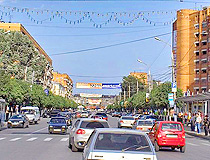
City traffic in Tula
Author: Sergey Bulanov
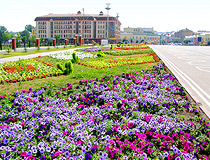
Colorful flower beds in Tula
Author: Roman Dawydkin
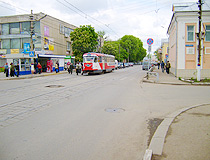
Tram in Tula
Author: Sitnikov
Tula - Features
One of the features of Tula is its proximity to Moscow (2-3 hours by car or train). The City Day of Tula is traditionally celebrated on the second Saturday of September.
The climate of Tula is moderately continental with distinct seasons. It is characterized by warm, long summers and moderately cold winters with frequent thaws. The average temperature in July is plus 19.1 degrees Celsius, in February - minus 7.5 degrees Celsius.
The territory of the city is crossed or passed in close proximity by important highways of federal significance (Moscow - Crimea, Kaluga - Tula - Ryazan) and railways (Moscow - Donbass, Tula - Kozelsk). Public transport in Tula is represented by buses, minibuses, trolleybuses, and trams.
Tula is a large industrial and commercial centers in Russia. The leading industries are ferrous metallurgy, machine building, and metalworking. There are several large plants located near Tula - OJSC “Tulachermet” (the largest exporter of pig iron in Russia), OJSC “Kosogorsk Metallurgical Plant” (a fairly large producer of blast furnace iron, artistic and industrial casting), OJSC “Polema” (one of the largest in Russia enterprises specializing in powder metallurgy), as well as OJSC “Vanadium-Tula”. The operation of these plants negatively affects the ecology of the city, having a direct impact on the cleanliness of the air.
Tula is known for three activities of local residents rooted deep in the history of the city: the production of weapons, samovars, and gingerbread. Each of them is represented in the city by the Museum of Weapons, the Museum of Samovars, and the Museum of Tula Gingerbread.
In the Russian language there is such a phraseological unit as “Don’t go to Tula with your samovar” which means doing something useless. In English there is a close proverb - “Don’t carry coals to Newcastle”.
In total, on the territory of Tula there are more than 300 objects of cultural heritage: monuments of architecture and urban planning, history. The Tula Kremlin, the oldest building in the city, is an architectural monument of the 16th century. Yasnaya Polyana, the house-museum of Leo Tolstoy, is located about 14 km south-west of Tula. To visit all the sights of Tula, you will need at least 2-3 days.
The center of Tula is Lenin Square located near the Tula Kremlin. The main street of the city is Lenin Avenue - the busiest street in the city with a lot of educational institutions, a drama theater, a philharmonic society, monuments to various cultural figures, monuments dedicated to the Second World War, various shops, restaurants, cafes, and supermarkets. Celebrations, parades and processions are held here.
Main Attractions of Tula
The Tula Kremlin - a brick fortress with 9 towers located in the center of Tula, a unique complex of architectural and historical monuments of the 16th-19th centuries, the oldest building in the city. On the territory of the fortress you can see the Assumption Cathedral, built in the Russian Baroque style in 1766, the Epiphany Cathedral (1862), erected in memory of the soldiers who fell in the Patriotic War of 1812 (the French invasion of Russia) and used as a branch of the Tula Museum of Weapons, as well as the 19th century shopping arcade.
In addition to a tour of the Tula Kremlin, we recommend visiting the exposition of the Spasskaya Tower. In the basement of the tower there is an exhibition “The torture chamber of the 17th century” and on the two upper floors you can see the exhibition “The weapons of a medieval warrior”. There are several souvenir shops with handicrafts on the territory of the Tula Kremlin. The beautiful Kazanskaya Embankment runs right by the walls of the fortress - a great place to walk along the small Upa River.
Holy Dormition Cathedral (1898-1902) - a very picturesque building constructed in the Russian style with red brick walls, black domes, and golden crosses. The interior decoration impresses with its magnificent paintings and frescoes. It is located at the exit from the Tula Kremlin to Mendeleevskaya Street near Lenin Square.
Museum “Tula Samovars” - one of the symbols of Tula located in an old building named after Emperor Alexander II in front of the entrance to the Tula Kremlin. Here you can see a large collection of all kinds of unique samovars of the 18th-20th centuries, learn about the main stages in the history and production of samovars. Mendeleyevskaya Street, 8.
Tula Museum of Weapons - the oldest museum of weapons in Russia, founded in 1873. In 2012, a new building of this museum was opened, designed in the form of an old Russian helmet. In 2015, a new permanent exhibition “The history of small arms and cold weapons from the 14th century to the present” was opened here. An exhibition of Russian military equipment of the second half of the 20th century is located on the territory of the museum. Oktyabrskaya Street, 2.
Museum “Tula Gingerbread” - a small museum dedicated to the history, diversity, and tradition of the production of Tula gingerbread. In two halls of the museum, a huge assortment of gingerbread is presented: personalized, congratulatory with inscriptions, honorary, custom-made, timed to special dates and holidays, including a one-of-a-kind gingerbread weighing 50 kilograms. There is a shop with various edible gingerbread souvenirs at the museum. Oktyabrskaya, 45a.
Tula Museum of Fine Arts - one of the largest regional museums in Russia, which has more than 23 thousand works of painting, sculpture, graphics, arts and crafts, and folk art. There are three collections in total: the department of Russian art, the department of Western European art, and the department of contemporary art. Here you can see the works of such famous Russian painters as Surikov, Repin, Polenov, Aivazovsky, Shishkin, Levitan. Engelsa Street, 64.
Museum “The Demidovs’ Necropolis” - a memorial historical museum dedicated to the activities of the Demidovs, a dynasty of industrialists and entrepreneurs known throughout Russia. The exposition was opened for the 340th anniversary of the birth of the founder of the dynasty - Nikita Demidov. The central place in the museum is occupied by the family tomb of the Demidov family, which is located on the territory of the Nikolo-Zaretskaya church. Demidovskaya Street, 9.
Central Park of Culture and Rest named after P.P. Belousov. In the past, there was a huge city dump on the site of this park, but at the insistence of the chief sanitary doctor P.P. Belousov the territory was cleared and planted with various trees, shrubs, flowers. Today, it is the largest park area in Tula (143 hectares), which has the status of a natural monument of national heritage. The main part of the park is a forest and a recreational area. One of its most picturesque places is a cascade of three ponds.
**Motorcycle Museum “Moto-Auto-Art”. The basis of its exposition is a unique, the world’s most complete collection of motorcycles produced by the Tula Machine-Building Plant. However, there are also other motorcycles here, a lot of which are truly rare examples. The museum is located near Tula, in the village of Kharino (Koltsevaya Street, 12).
Leo Tolstoy Museum-Estate “Yasnaya Polyana”. The great Russian writer Leo (Lev) Nikolaevich Tolstoy was born in this estate, about 14 km southwest of Tula. Here he lived the main part of his life. In addition to the old house, the museum complex also includes other buildings: a stable, a smithy, a bathhouse, a gazebo, and a birch bridge. The grave of Leo Tolstoy is also located here. Almost nothing has changed since the time when the writer lived and worked in this beautiful estate.
Museum-Reserve “Kulikovo Field” - a memorial museum-reserve located on the supposed site of the historical Battle of Kulikovo (1380), about 125 km southeast of Tula near the village of Mokhovoye. This museum is included in the list of especially valuable objects of cultural heritage of the peoples of the Russian Federation. The following sights and museums are located here: the monument-column to Dmitry Donskoy (1850), the church-monument of St. Sergius of Radonezh (1917), the Church of the Nativity of the Blessed Virgin Mary (1884), the Museum of the Kulikovo Battle, the museum-memorial complex to the heroes of the Kulikovo Battle in the village of Monastyrschino, Memorial on Red Hill.
The most interesting and unusual Tula street monuments are “Taming the Flea” (Lenin Avenue, 85b), “Tula Gingerbread” (Lenin Square), and “Mother-in-law” (also known as “Mother-in-lawsaurus” or “Dinosaur”) (Oktyabrskaya Street, 26).


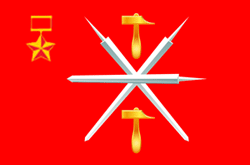
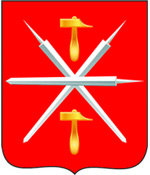
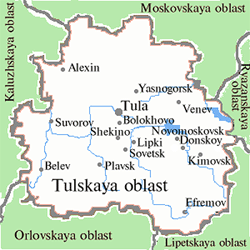



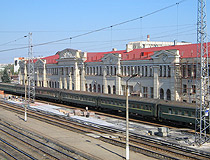
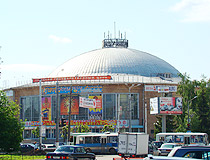
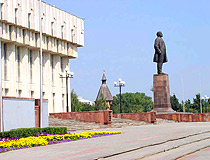
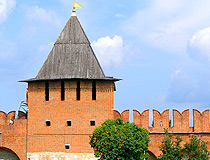
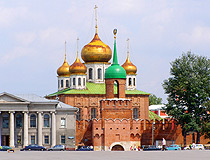
The comments of our visitors